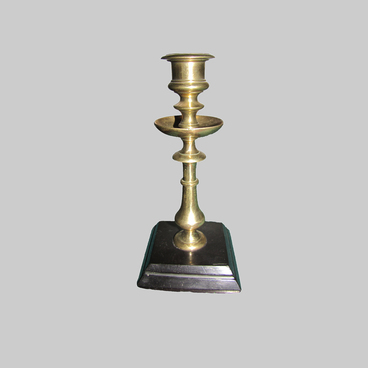The House-Museum of G.V. Chicherin has in its collection not only a bouillon bowl but also a saucer made at the Meissen porcelain factory in Germany between 1815 and 1860.
The craftsmen of the 19th century decorated dishware in the same style: a white background with colorful insects, decor with voluminous blue flowers and green leaves, golden edges. As a rule, during this period, craftsmen used images of Asian or European patterns and plants.
The authenticity of the kitchen items can be judged by the blue logo with crossed swords on the back. And that is an important logo, since dishware under the Meissen brand were extremely popular in Russia since the 18th century. The situation could not but provoke all sorts of scammers. The demand was so great that the Saxon manufactory set aside special days when the production was focused exclusively on the domestic market. In Moscow, Kiev, Poltava and other cities, permanent warehouses were even placed for storing imports.
Cultural historians noticed crowned heads, noble families and artists among customers in Russia and in other countries. For example, impressive porcelain collections were possessed by: Catherine II, Counts Stroganovs and Princes Yusupovs, Carl Faberge.
Let us remind you that in 1708 Johann Böttger, an alchemist, and Ehrenfried von Chirnhaus, a scientist from Germany, created the world’s first hard porcelain based on samples from China. Two years later, Augustus the Strong, the ruler of Saxony, announced the establishment of a porcelain manufactory, which became the first in Europe.
Workers at the Meissen factory still create porcelain by hand. As in past centuries, kaolin, feldspar and quartz are important ingredients today. It is also known that at the moment the art laboratory has over 10,000 secret recipes for making paints.
Collections of many museums around the world include exhibits from the Meissen Porcelain Factory. The German company itself has an archive of more than 200,000 models of different years. Some of those masterpieces can be viewed in the State Hermitage Museum.
The craftsmen of the 19th century decorated dishware in the same style: a white background with colorful insects, decor with voluminous blue flowers and green leaves, golden edges. As a rule, during this period, craftsmen used images of Asian or European patterns and plants.
The authenticity of the kitchen items can be judged by the blue logo with crossed swords on the back. And that is an important logo, since dishware under the Meissen brand were extremely popular in Russia since the 18th century. The situation could not but provoke all sorts of scammers. The demand was so great that the Saxon manufactory set aside special days when the production was focused exclusively on the domestic market. In Moscow, Kiev, Poltava and other cities, permanent warehouses were even placed for storing imports.
Cultural historians noticed crowned heads, noble families and artists among customers in Russia and in other countries. For example, impressive porcelain collections were possessed by: Catherine II, Counts Stroganovs and Princes Yusupovs, Carl Faberge.
Let us remind you that in 1708 Johann Böttger, an alchemist, and Ehrenfried von Chirnhaus, a scientist from Germany, created the world’s first hard porcelain based on samples from China. Two years later, Augustus the Strong, the ruler of Saxony, announced the establishment of a porcelain manufactory, which became the first in Europe.
Workers at the Meissen factory still create porcelain by hand. As in past centuries, kaolin, feldspar and quartz are important ingredients today. It is also known that at the moment the art laboratory has over 10,000 secret recipes for making paints.
Collections of many museums around the world include exhibits from the Meissen Porcelain Factory. The German company itself has an archive of more than 200,000 models of different years. Some of those masterpieces can be viewed in the State Hermitage Museum.



